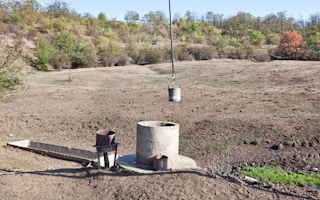Two great bodies of water have begun to feel the heat. European scientists report that they have evidence that the planet’s groundwater – the subterranean ocean of freshwater that bubbles into wells, freshens desert springs, scours great underground limestone caverns and makes possible the irrigation of crops in the world’s farmlands – may be responding to climate change.
And out on the open sea, average global surface temperatures in the northern summer of 2014 were the highest ever recorded.
Both claims will require verification from other sources: in science, one set of measurements is never enough.
Precious resource
In the case of the groundwater temperature rises, this will not be easy. Although water authorities everywhere are concerned about the depletion of this precious resource, and there are routine chemical and microbiological checks, sustained records of groundwater temperatures are rare.
“
Global warming is reflected directly in the groundwater, albeit damped and with a certain time lag
Peter Bayer, senior scientist in engineering geology at ETH Zurich
But a team from ETH Zurich in Switzerland and Karlsruhe Institute of Technology in Germany had an advantage: they had data from four wells near the German cities of Cologne and Karlsruhe, where temperature records have been maintained systematically for nearly 40 years.
They report in the journal Hydrology and Earth System Sciences that, after a detailed study of evidence from the four sources, they were able to identify a pattern of very small but significant rises in the groundwater temperatures that mirrored – but came later than – changes in average temperatures above ground. That is, even far below the surface, global warming is making its presence felt.
Research like this is not easy, and there will be plenty of questions and some argument about how they reached these conclusions.
Warming stages
Groundwater is ancient rainfall that seeped down into the bedrock and filled the pores in the soil. As it is drawn from one source, it moves to fill the gap, so there will be questions about how “old” the water is, how swiftly it is being replenished, how well insulated it is from the surface, and how close it might be to seepage from surface rivers.
However, the data reveals not just a rise in temperatures over the four decades, but also a series of warming stages that echo patterns of warming in the atmosphere far above.
“Global warming is reflected directly in the groundwater, albeit damped and with a certain time lag,” says Peter Bayer, senior scientist in engineering geology at ETH Zurich.
Meanwhile, Axel Timmermann, professor of oceanography at the University of Hawaii’s International Pacific Research Centre, says that global mean sea surface temperatures in 2014 were the highest ever recorded.
They were higher even than those of 1988, a year marked by a powerful El Niño event that warmed the Pacific and reversed climate patterns, with sometimes catastrophic consequences in the form of floods, droughts, windstorms, forest fires and harvest failures.
Unexpected slowdown
The 2014 ocean warming may have brought to an end the so-called global warming hiatus, in which average surface air temperatures rose only very slowly between 2000 and 2013.
While there have been a number of possible explanations for this unexpected slowdown – unexpected because greenhouse emissions have increased in that time – there has been no clinching argument. But Timmerman says that the long pause may have come to an end.
He says: “The 2014 global ocean warming is mostly due to the North Pacific, which has warmed far beyond any recorded value and has shifted hurricane tracks, weakened trade winds and produced coral bleaching in the Hawaiian islands.
“Record-breaking greenhouse gas concentrations and anomalously weak North Pacific summer trade winds, which usually cool the ocean surface, have contributed further to the rise in sea surface temperatures. The warm temperatures now extend in a wide swath from just north of Papua New Guinea to the Gulf of Alaska.”

















